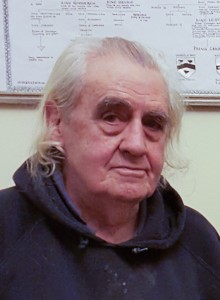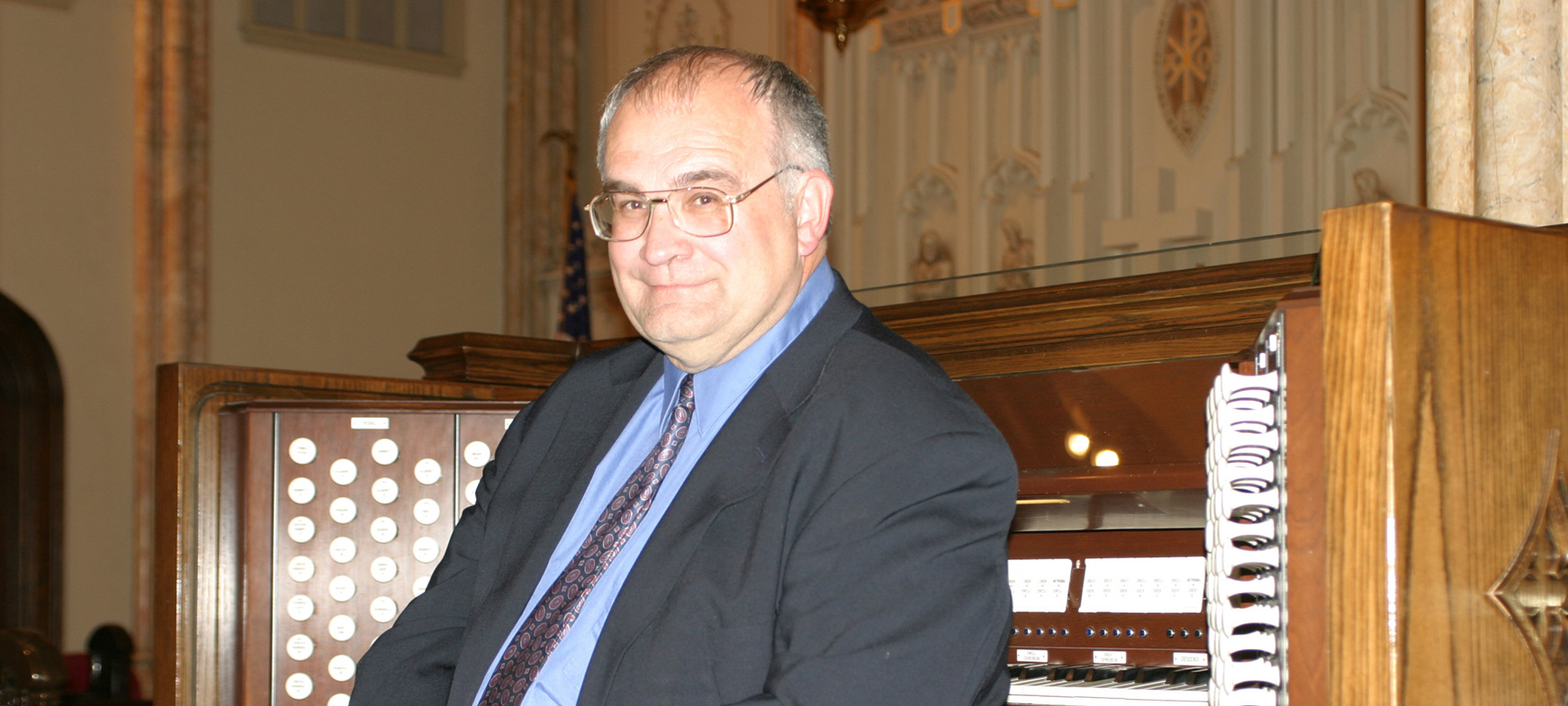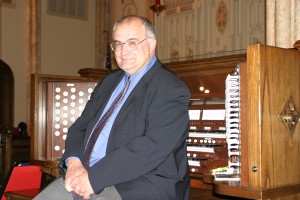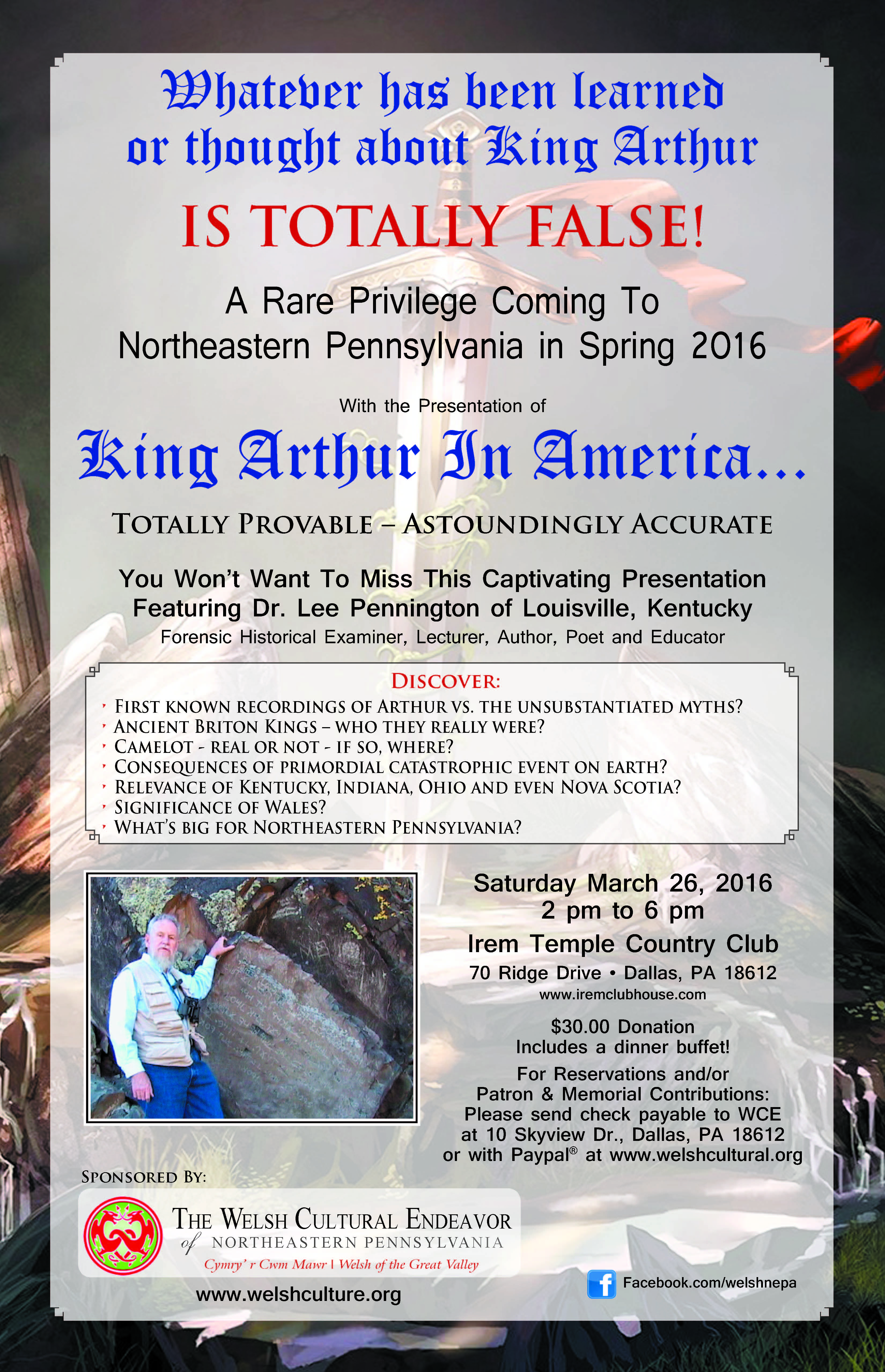British researchers working with The Welsh Cultural Endeavor have been knighted
We are pleased to announce that researchers in Britain who work closely with The Welsh Cultural Endeavor of Northeastern Pennsylvania have received high honors from a king whose own journey and plight to be recognized reflects their own.
Alan Wilson of Wales and Englishman Baram Blackett will be knighted, effective, June 29, 2016, by King Kigeli V of Rwanda. The date coincides with the king’s 80th birthday. Wilson and Blackett have been at the forefront of research into the true history of Wales and Britain despite criticism from their peers and academics, and now they are being honored for it.
For nearly four years, The Welsh Cultural Endeavor has been working to preserve and propagate a lifetime’s worth of research painstakingly gathered by Wilson and Blackett. In the rolling hills of Wales, the two have uncovered an ancient language, undeniable evidence of the first-century Christian church in Wales and proof that the famed King Arthur II, whose name and feats have been fictionalized and fantasized for centuries, was a warm-blooded Welshman who once traveled to America and died at the hands of attacking Native Americans in the sixth century.
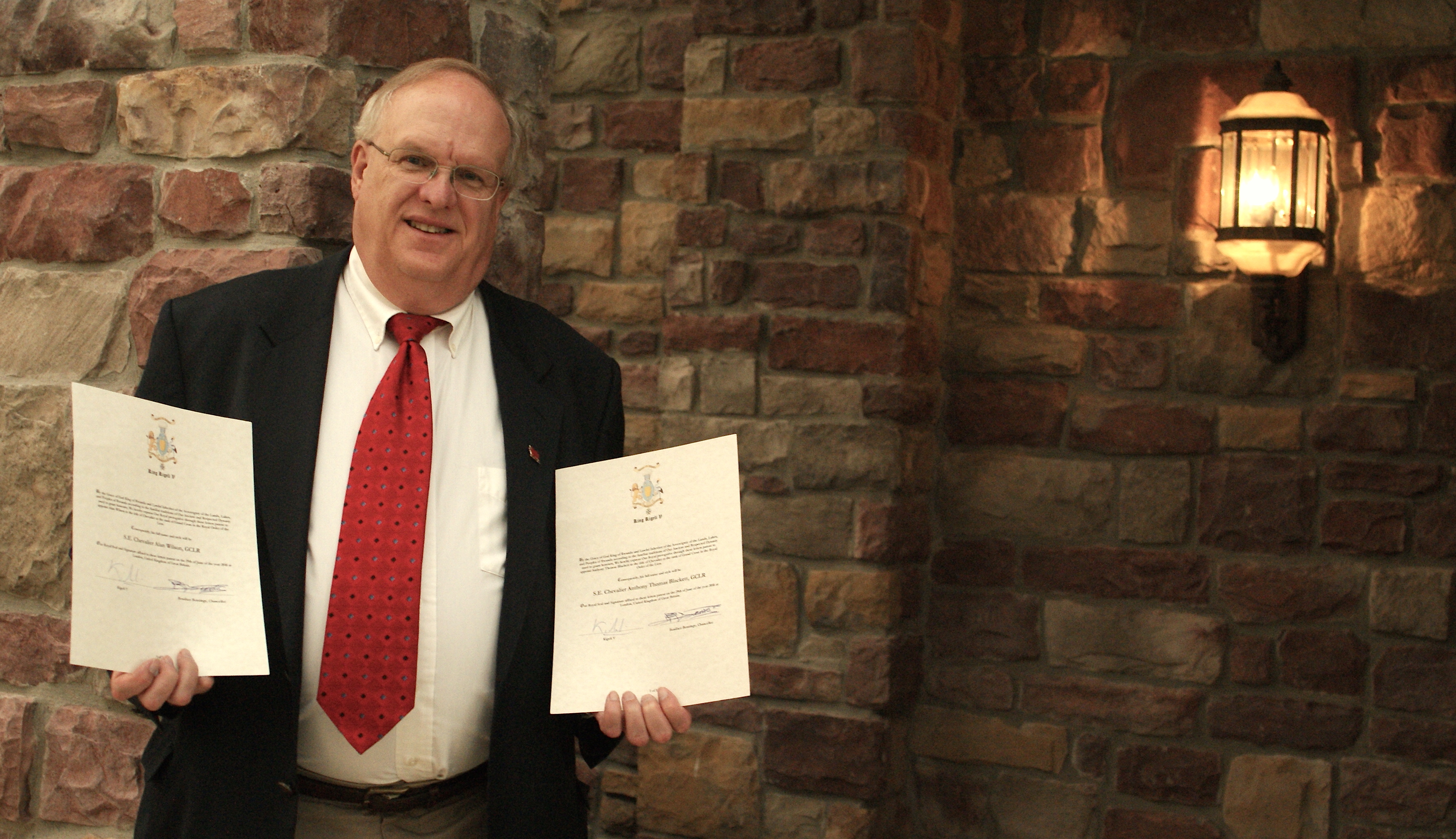
George Horwatt, President of The Welsh Cultural Endeavor of Northeastern Pennsylvania, holds proclamations signed by King Kigeli V of Rwanda to knight Welsh Researchers Alan Wilson and Baram Blackett.
King Kigeli V recognizes the efforts of Wilson and Blackett and reflected this in a proclamation. He commended the two for their meticulous forensic investigations, which were often completed at great personal cost. King Kigeli V has conveyed to them the Grand Cross of the Royal Order of the Lion of Rwanda.
George C. Horwatt, founder and President of The Welsh Cultural Endeavor, has been named the king’s emissary to Wilson and Blackett and has worked tirelessly to coordinate their knighting. Wilson and Blackett join the ranks of African leaders to be knighted by the Rwandan king, most notably the late South African President Nelson Mandela.
“We only read the records. If it’s not in the records we don’t put it in the book. If it’s not on a piece of parchment or on a stone tablet or a … jug or on a grave or whatever, it doesn’t go in the book. If the site isn’t there on a map and you can’t stand on it, it doesn’t go in the book. We’re not interested in extrapolating or in interpreting or speculating in our research, be weird if we didn’t. It’s a seminal work. Nobody else has bothered for 300 years at least. We always admit the mistake – if we’ve made the mistake, we’ve got that wrong – and it’s the right way to go.” ~ Alan Wilson, during a 2010 conference in Bath, England
Since being granted political asylum in the U.S. in 1992, King Kigeli V, who has a United Nations resolution from the 1960s calling for his return to the throne, has lived a modest life outside of Washington, D.C., and he remains devoted to serving Rwandans throughout the diaspora resulting from the tribal tensions in the 1990s.
Much like the Rwandan king, Wilson and Blackett have long been denied legitimacy in Wales. As an organization committed to preserving Welsh heritage and culture in the United States, we see the truth in their findings and feel obligated to help protect the knowledge they have gathered. As an organization committed to preserving Welsh heritage and culture in the United States, we see the truth in their findings and feel obligated to help protect the knowledge they have gathered.
“In recognition of original research, often at great personal cost, demonstrating 40 years of meticulous forensic investigations into the beginnings of ancient Britain and that the famed King Arthur was two historical individuals, His Majesty King Kigeli V of Rwanda, the last king to reign in Rwanda, has awarded the Grand Cross of the Royal Order of the Lion of Rwanda to Alan Wilson and Anthony Thomas (Baram) Blackett. Other notable historical awardees of the same Order are Sir Conrad Swan, Garter Principal King of Arms; Sir James Carlisle, Governor General of Antigua and Barbuda; His Majesty King Mwambutsa IV of Burundi; His Majesty Sir Edward Mutesa, King of Buganda; His Majesty King Hussein of Jordan; His Excellency Nelson Mandela, President of South Africa; His Imperial Majesty Emperor Haile Selassie of Ethiopia; and other awardees.” ~ Statement from His Majesty’s Private Secretary regarding the knighthoods for Alan Wilson and Baram Blackett.
Read MoreDr. Lee Pennington reveals true history of King Arthur
It was pure destiny and a cosmic event that Prince Madoc – brother of legendary King Arthur II, both sons of Welsh King Meurig – to wander the Atlantic Ocean for a decade leaving Wales A.D. 562 for the first time.
The head of the British naval fleet, Prince Madoc, became disoriented as what historians believe was a comet or other astronomical object slammed into earth near Britain with the force of 100 nuclear bombs, Arthur historian, Lee Pennington, Ph.D., explained.
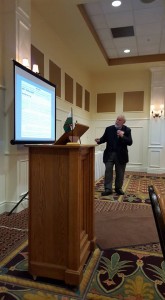
Lee Pennington, Ph.D., speaks during a presentation on King Arthur’s journey to America March 26 at the Irem Temple Country Club, Dallas.
The naval commander, wandering the Atlantic circa sixth century, by chance came across what he described as a lush, green land.
When he finally returned to Wales and his brother, King Arthur of round table fame, 10 years after getting lost, he excitedly recounted his discovery of America.
Dr. Pennington brought these histories, long-criticized by skeptics, to life when he spoke March 26, 2016, at the Irem Temple Country Club. His talk, and an accompanying buffet lunch, were sponsored by The Welsh Cultural Endeavor of Northeastern Pennsylvania.
“I was delighted with the reaction,” Dr. Pennington said about his reception. “I don’t always get that with this story.”
Whether King Arthur traveled to America 900 years before Christopher Columbus or whether he existed at all, is the source of great controversy. And as one of the world’s leading experts on King Arthur’s life and journeys, Dr. Pennington is no stranger to criticism for his findings.
Dr. Pennington disavowed the notion that a non-existent, unrecorded Madoc who is an invented son of Prince Owen Gwynedd arrives here around A.D. 1175.
King Arthur traveled to what is now the United States, and he died here, Dr. Pennington said.
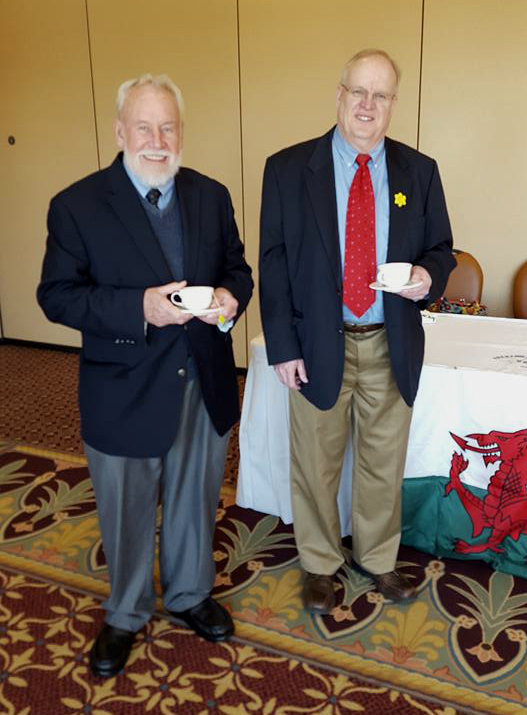
Dr. Lee Pennington, left, and The Welsh Cultural Endeavor of Northeastern Pennsylvania President George Horwatt pose for a photo during an event March 26 at the Irem Temple Country Club, Dallas.
He showed images of ancient murals that depict native Indians attacking a king, whose arms are spread-eagle, with arrows. Historical documents reveal King Arthur was mummified, wrapped in deer skin and returned to Wales where he lays to this day.
Widely accepted translations of “The Stanzas of the Grave,” an ancient poem describing the burial places of British kings, say Arthur’s grave is “concealed forever.” However, Dr. Pennington argues the translation distorts the original manuscript, and King Arthur’s grave, to the exact spot, is described in the texts. Dr. Pennington’s collaborating experts, Alan Wilson and Baram Blackett in England, offer that at least 10 clear records combine to tell of his body being returned to Wales following a great funeral.
“It actually says the grave of Arthur is in a high, windy place,” Dr. Pennington said, going on to explain the name of the field is Mynydd y Gaer meaning fortress mountain, which is long in range.
Dr. Pennington spoke and answered questions for nearly four hours before an engaged and enthusiastic audience on the true history of Welsh King Arthur as well as efforts by other historians to stamp it out. A good number of those attending were not actually Welsh, but followed their curiosity and keen interest in the history of King Arthur.
Dr. Pennington’s presentation is part of a greater effort by The Welsh Cultural Endeavor to introduce our region, which is well-stocked with Welsh descendants, to this, our exciting history, in hopes that we might preserve it and pass it on for generations to come.
Keep watch for more important events and programs to be announced by The Welsh Cultural Endeavor.
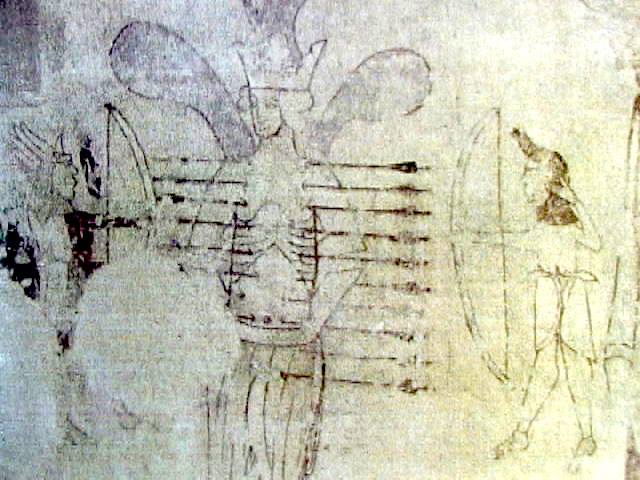
This mural depicts the death of King Arthur II in Kentucky, AD 579. Dr. Pennington shared images of the mural during his presentation, and they clearly depict a king being attacked by Indians. The mural was discovered in the 1970s beneath whitewash on the walls of Stoke Dry Church in England.
Welsh Cultural Endeavor’s vice president, Dr. William Nash III, has died
It is with a heavy heart that we share sad news – Dr. William Nash III, our dear friend, passed away on Sunday, March 27. He was 69.
Dr. Nash, a Pottstown resident, was the former president of the St. David’s Society of the Wyoming Valley and, until his passing, served as vice president of our organization, The Welsh Cultural Endeavor of Northeastern Pennsylvania. Without his efforts, this organization would have never survived.
His obituary, which appeared in the Pottstown newspaper, The Mercury, appears below. The Welsh Cultural Endeavor extends its deepest condolences to Mr. Nash’s loved ones in their time of loss. He was a Welshman of the finest stock, and we were proud to have called him a friend and a Cymbro.
Contributions from his Welsh friends may be made to the Dr. William L. Nash III Scholarship Fund for Music Study c/o The Welsh Cultural Endeavor of Northeastern Pennsylvania on our Donate page via PayPal or mailed to 10 Skyview Dr., Dallas, PA 18612.
DR. WILLIAM L. NASH III, 69, OF POTTSTOWN
Dr. William L. Nash III, 69, of Pottstown, husband of Janet N. (Nossal) Nash, passed away on Sunday, March 27, 2016 at Pottstown Memorial Medical Center.
Born in Kingston, PA, he was a son of the late Raymond S. Nash and the late Margaret (Zimmerman) Nash. Bill was a music educator for Quakertown Community School District for thirty years retiring in 1998. He also was the music director at St. John’s Lutheran Church, Boyertown for 18 years, Emmanuel Lutheran Church, Pottstown for 22 years, and Parkside United Church of Christ for one year. He was a member of Emmanuel Lutheran Church, Pottstown, Stichter Masonic Lodge #254, Pottstown, American Guild of Organists, The Antique & Classic Boat Society, and PA Music Educators’ Association.
Surviving, besides his wife, are a son, William J. Nash, Pottstown, and a daughter, Adrienne Nash Melendez wife of Carlos, Coatesville.
A memorial service was held at 11 a.m. on Friday, April 1, from Emmanuel Lutheran Church, Hanover & Walnut Streets, Pottstown. Officiating will be Reverend Phillip Waselik. Burial was in Highland Memorial Park.
Contributions may be made in his memory to Emmanuel Lutheran Church “Organ Fund”, 150 N. Hanover St., Pottstown, PA 19464. Arrangements were by the Schumacher & Benner Funeral Home & Crematory, at 359 King St. in Pottstown, PA. Our web site exists to serve the friends and family of the deceased.
Go to www.schumacherandbenner.com to extend sympathies and access additional service details.
Read MoreKing Arthur in America — Dr. Lee Pennington
World-renowned forensic historian, author and poet, Dr. Lee Pennington, from Louisville, Kentucky, presented discoveries made of the presence of King Arthur along with his brother, Prince Madoc, in America during the mid 6th century. A host of artifacts and records were on display.
Read more about Dr. Pennington.
The presentation took place on Saturday, March 26, in the Irem Temple Country Club, Dallas, and included a buffet dinner.
Read MoreThe ‘St. Patrick’ No One Wants To Hear About
There were 3 possibilities of a Saint Patrick, all Khumric “Welsh” too.
- Patrick, the son of Alfred, the son of Goronwy, of Gwareddog on Arvon who lived in the time of St. Elvod, and belonged to the college of Cybi in Anglesey, of which he was a saint. But not the Patrick of Ireland.
- Patrick son of Gwyndeg and brother of Gynyr of Caer Gawch. Ther are many saints in the progeny and family Gynyr of Caer Gawch. Non Vendigaid (the Blessed), the mother of St. David and the daughter of Gynyr of Caer Gawch etc., refer to Britainy – late 5th early 6th century. The dates do not fit the time period.
The “Life of St Patrick” is quite explicit. He was born at Tair Onen c. AD 373 (Three Ash Trees) a tiny hamlet around 1 mile east of Cowbridge in Glamorgan, South Wales. He attended the Monastery on the coast later known as Llan Illtyd Fawr, now Llantwit Major (an English concealing name).
Irish raiders – who practised sudden hit and run raids before the military could get at them, seized Patrick.
One way or another he was set free when the eldest son of Cunada Wledig crossed over and seized South East Ireland – Leinster, where he set himself up as king there.
This set Patrick free and he and later returned to South East Wales.
Patrick then wanted to go back to Ireland to spread Christianity there.
The South East Wales Apostolic Christian rulers refused to allow this.
So Patrick went to Gaul-France where the ‘British Church’ had spread and to to persuade the religious chiefs there to ordain him to go to spread Christianity in Ireland.
They wanted to get rid of him – so they ordained him and told him to go spread Christianity in Ireland.
A Welsh King had conquered Leinster and was ruling that South East region of Ireland and he was the eldest son of the Cuneda Wledig- Battle Sovereign – who had ejected Irish settlers from Gwynedd in North West Wales.
The British-Welsh seized Leinster in order to end the Irish nuisance.
In the soon to be released writings it is obvious that the North Welsh Prince who set himself up in that part of Ireland, was the person who then set Patrick free and allowed him to return to Wales.
Patrick then got the idea of returned to that Leinster zone and spreading Christianity.
Our researchers have investigated all this but have not published the full account of it yet. Book to be coming soon, ‘The Real St. Patrick’ – Michael A. Clark contributing editor based on the works of M A Kelly
The Irish do not like the idea of anyone conquering parts of Ireland in antiquity but facts are facts.
*************************************************************************************
MORE…that St Patrick “of Ireland” came from Glamorgan in South East Wales, King Arthur, II country. – Our researchers will be providing much more…
Anyway, more collaborating agree there were three old saints all named Patrick.
One was of around AD 550 – 600 and plainly from the North of Britain and no one thought he was the correct one.
The other two establishment loudly advertises St Patrick from Gwynedd in North Wales. They actually state that St Patrick was a son of Alfred an Englishman. They state that he was at Bangor Monastery. They state that he was in the time of Bishop Elfodd
As St Patrick is dated as being in Ireland circa AD 317 – 337 all this is strange. First, the Bangor Monastery was founded in the time of Maelgwn Gwynedd – ie around AD 570 – 600 A bit late for St Patrick of Ireland. Second the Bishop Elfodd is VERY WELL recorded and he was of the AD 790 – 820 era. Again some 500 years out of time. St Patrick was born at Tair Onen – Three Ash trees in Glamorgan about 1 mile East of Cowbridge – Bonaventum all very well recorded and he was educated at the great Llantwit Major Monastic College in Glamorgan.
This is the sort of blatant hypocrisy currently practised by the devious academic political establishment. Transfer Patrick – VERY WELL DETAILED RECORDED – out of South East Wales. Move him as far away as possible to the North West. Then shift him to an impossible time frame in a monastery that did not exist, Then make his Abbot-Bishop to be Elfodd who was known as The Traitor. Elfodd proposed transferring from Apostolic British Church to the Roman Catholic Church. This then suitably allows St Patrick to be transferred in religion. – Alan Wilson.
Read More


